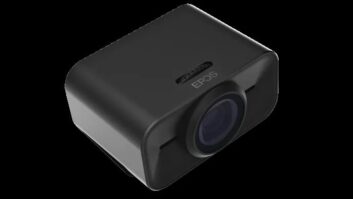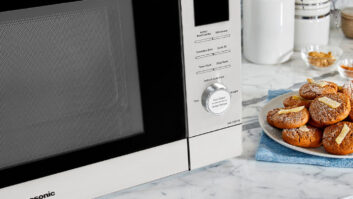Chinese television manufacturers exhibiting at the recent 2006 China International Consumer Electronics Show (SINOCES) picked up on the “1,080p” high-definition buzzword that is driving the higher-end flat-panel TV business in other parts of the world, but use of the terminology was apparently being applied more liberally here than in other regions.
Virtually all of China’s LCD and plasma TV manufacturers were advertising at least a few products as being 1,920 by 1,080p, when many of those models didn’t have the pixel count to support the claim.
One maker’s LCD TV literature showed virtually all models — even 17-inch 4:3 LCD sets — listed as 1,080p.
In select cases, TV makers did show actual 1,080p products, but the capability was hard to discern among a sea of lesser resolution products that all carried a 1,080p badge.
One show representative said the confusion may, in part, be related to the Chinese government only recently setting firm high-definition specification standards, which may not have been applied to pre-existing products.
In some cases, manufacturers were using the label to denote a set’s ability to accept a 1,080p signal and convert it to the display’s lower-resolution capability.
Either way, Chinese TV makers said they are gearing up to soon deliver the actual ultimate HD standard — true 1,080p — into the U.S. market, where U.S. advertising and commerce requirements are more rigid and exacting.
A representative for China’s Hisense — one of the country’s largest high-definition TV brands — said the company is gearing up to deliver 1,080p LCD TVs to its OEM customers next year in some OEM models. However, he continued that it is unlikely the capability will be carried in the company’s own branded products that are now sold by Kohl’s department stores.
That line is relegated primarily to smaller screen sizes that appeal to impulse purchasers among the chain’s primarily soft-goods clientele.
On display in the Hisense booth was a 71W-inch 1,080p plasma set, which uses a panel manufactured by LG. A company representative said the product may be marketed in a few months, but he had no price to announce or regions where it would be introduced.
Hisense counts Best Buy, which uses Hisense to manufacture LCD TVs for its private-label line, and HP among its top U.S. OEM accounts.
Haier, another leading Chinese flat-panel TV maker, was seen producing flat-panel plasma TVs bearing the 1,080p badge on a tour of its flat-panel assembly plant in Qingdao, although a spokesperson said those products were targeted at Europe and are not destined for the U.S. market at this time.
One representative for a Chinese set maker said that the United States is currently a very difficult market to break into with 1,080p products because aggressive brands like Westinghouse have already introduced 1,080p products at extremely low price points.
Beyond the difficulties in labeling and marketing true 1,080p products, China has little to offer in the way of 1,080p content sources. Next-generation high-definition disc players using the Blu-ray Disc and HD DVD formats were virtually absent from the show floor here, although such players are making headlines in other regions of the world.
Also not immediately evident in a quick walkthrough of the show floor were players based on China’s EVD or other Asian high-definition disc formats. Chinese manufacturers had developed rival formats to Blu-ray Disc and HD DVD to skirt steep licensing fees and requirements.













